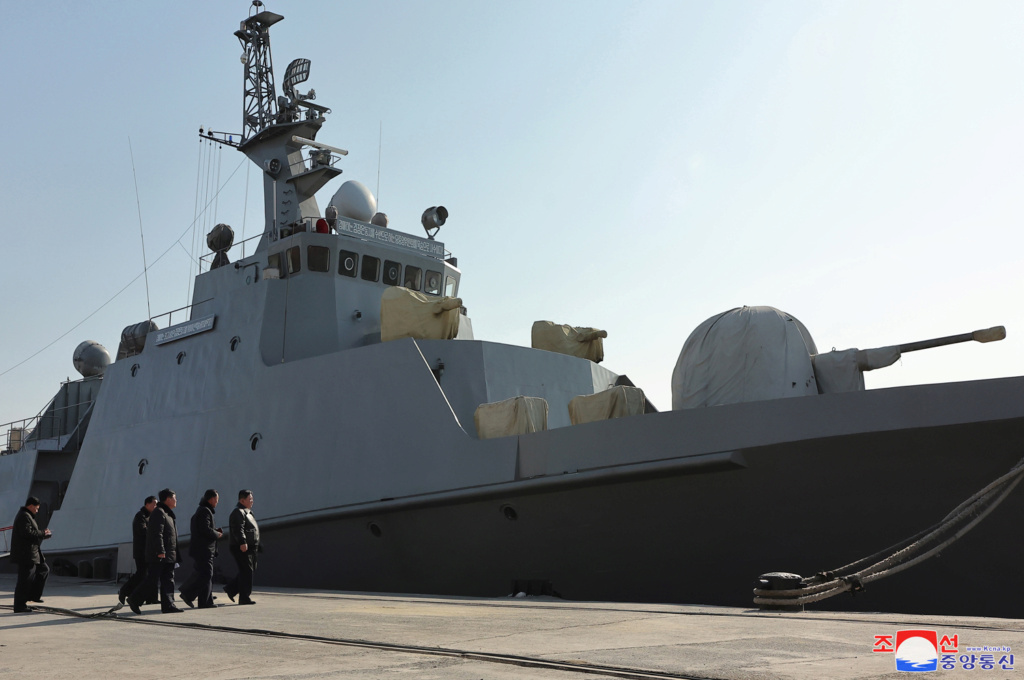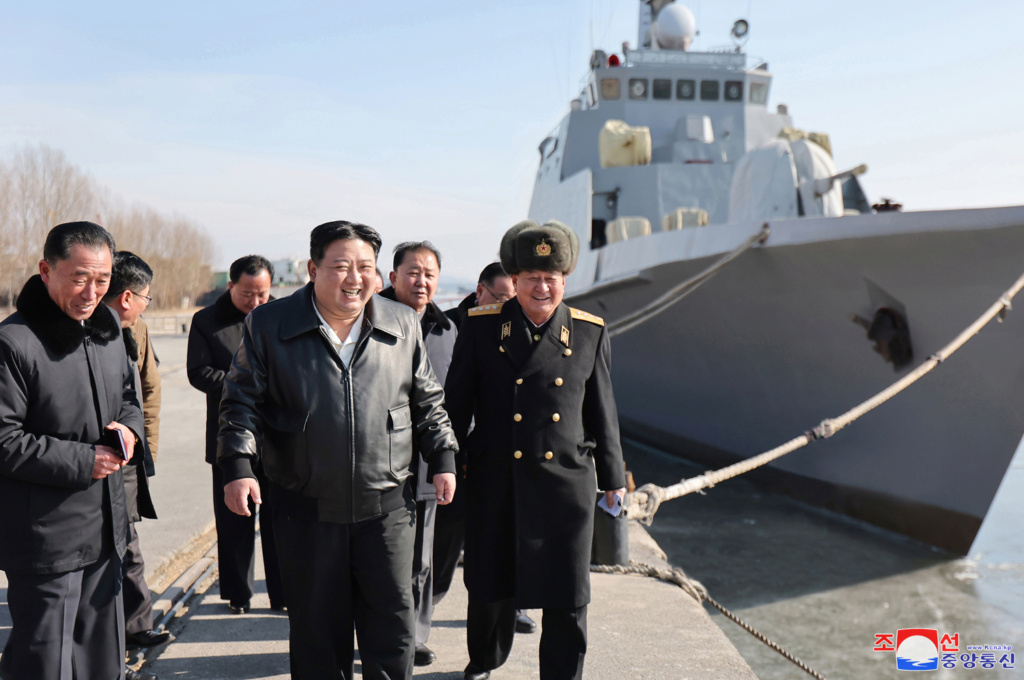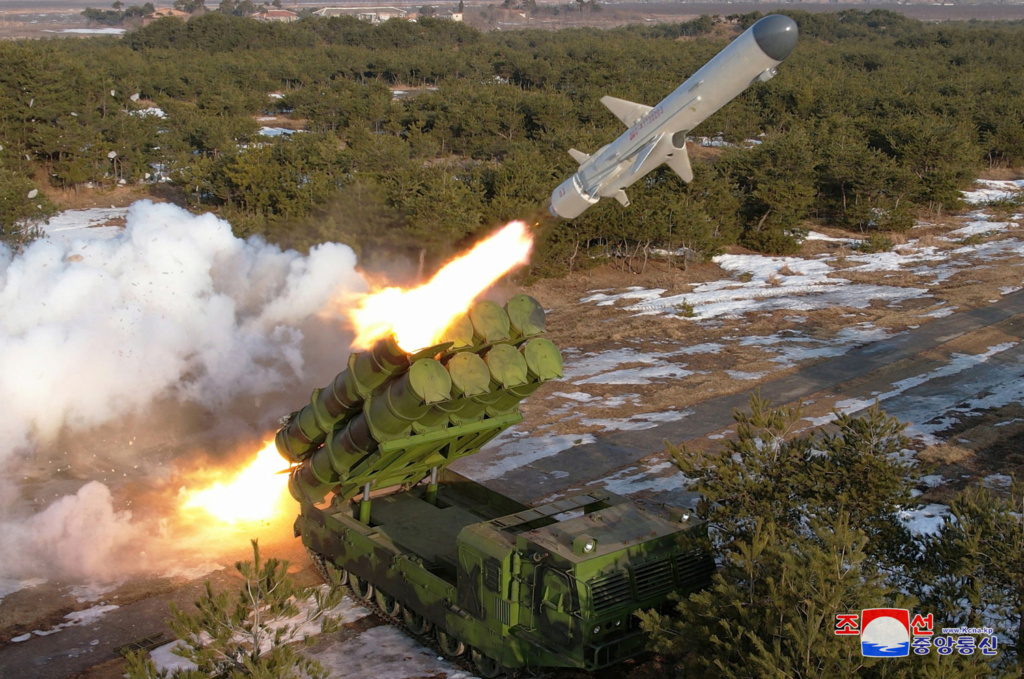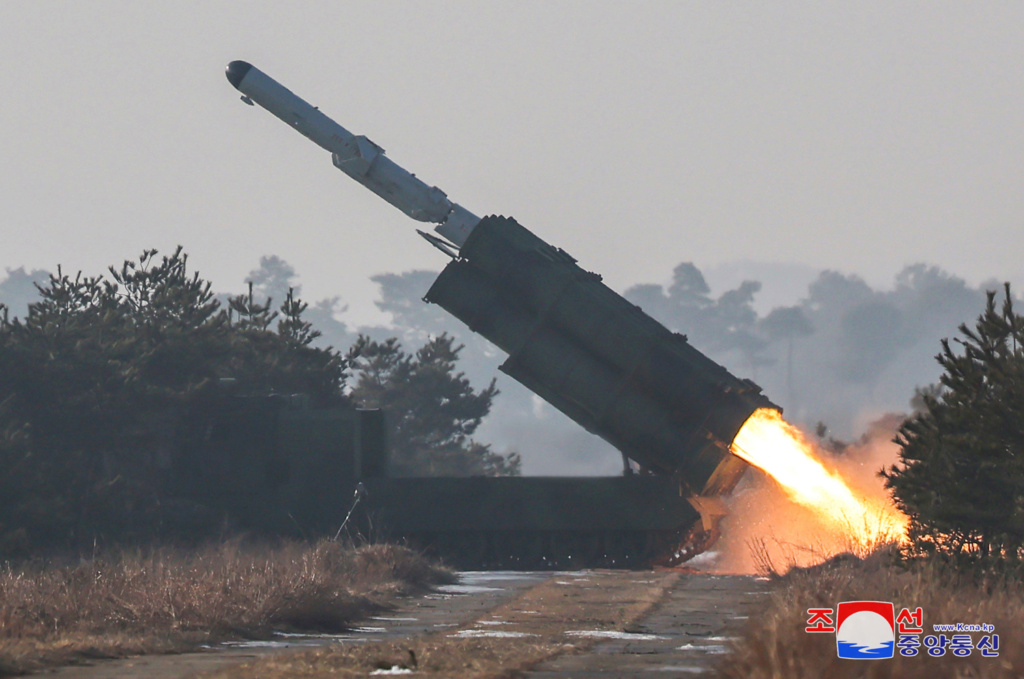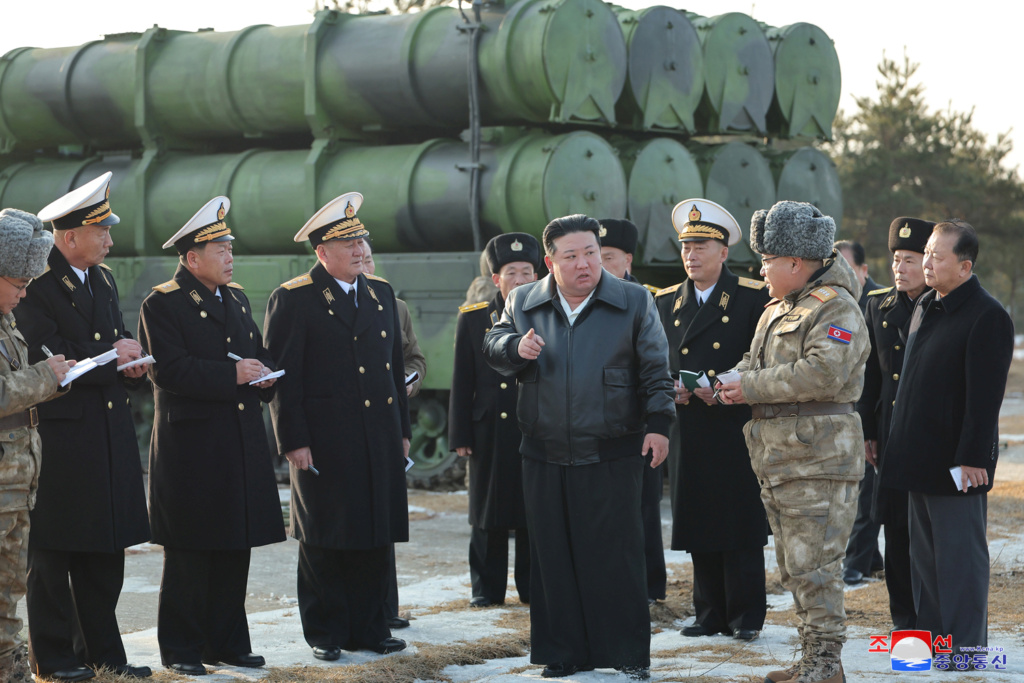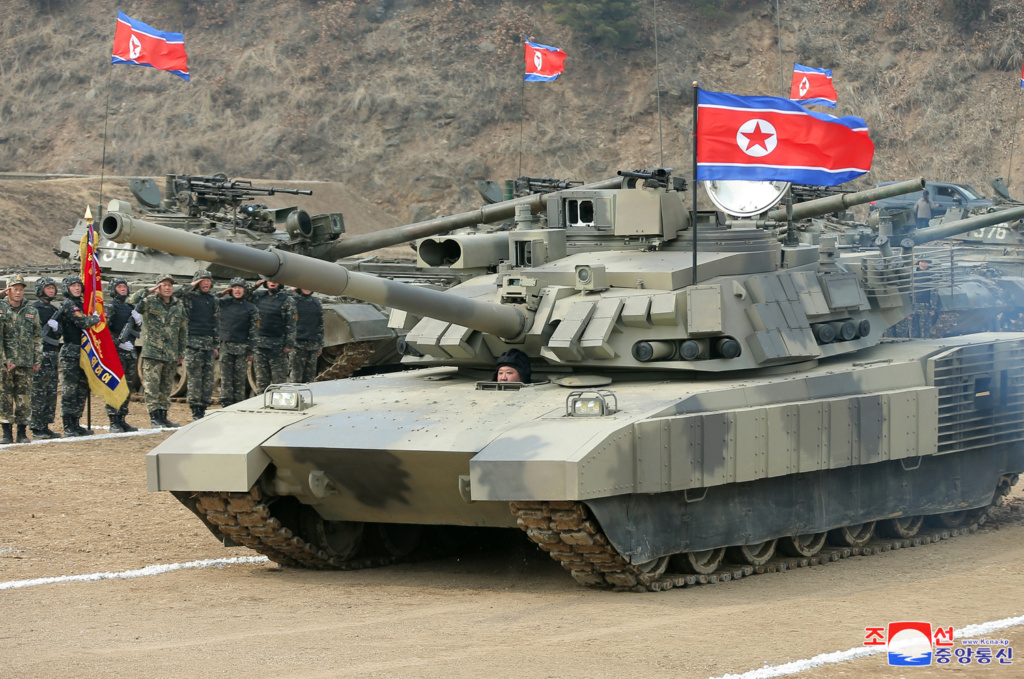First off you said you don't believe that targets beyond 200km are fixed and would be moving around then you contradicted yourself in your smerch part saying targets beyond 150km would be either point targets or moving.
No, more like I said targets more than 200km away are fixed or they are probably not worth trying to strike because the coordination needed to synchronise an attack with a target marker on site to mark the target might lose the target before ordinance can arrive... even very fast moving ordinance.
For stationary targets at more than 200km unless it is tiny even including individual vehicles like an artillery vehicle that does not need more than a few kgs of warhead to defeat I would say Iskander or cheap Iskander would be fine... lets call them Is and CIs.
Aren't all targets either stationary or moving irrespective of range?
You also stated that I talked about a 100kg warhead with a range of 300km plus I never said or mentioned anything of the sort. I did mention a much heavier warhead then 100kg. Smerch and Hermes have their place but can't fulfill this role, and iskander is overkill.
The problem is that these systems will be used for a variety of targets and if you want cheap then one way to make a weapon cheaper is a smaller warhead because the lighter a rocket is the easier it is to make it reach further without just adding more rocket fuel.
Smerch has a 100kg warhead or thereabouts and several members complained that Smerch should be reaching 200-300km... ignoring the fact that to reach such distances most rockets either increase in calibre or get a bigger rocket to launch them or have their warhead reduced.
As I keep mentioning Smerch is not HIMARS... Smerch is an artillery rocket system that is a cheap way of blunting an attack or attacking large groups or small groups of enemy forces... like a machine gun... you don't aim at each individual target, you rely on rate of fire and spread of fire to hit targets without aiming for heads or chests.
In comparison the HIMARs is a fucked up American corruption project to turn Honest John II super expensive artillery rocket into a much smaller but still very expensive system for hitting individual targets with... it is a sniper rifle.
Each vehicle operates on its own and they had to make a truck based 6 shot model because the 12 shot Bradley tracked vehicle version was too expensive for the US and her allies to actually use.
The Soviets have been using trucks for their rocket artillery because it is more effective if it is cheap and you have more of it.
They have evolved all the fancy ammo the Americans have but rarely use it as a sniper weapon.
You talk about using a BM system to target something that requires such that isn't in a heavily defended areas as a waste of money, but yet you would rather use iskander which is even more expensive as the solution.
No. I think ballistic missiles are easy to spot and easy to shoot down because their trajectory means they are visible from enormous distances from launch to impact and even an enemy as inept as a HATO supported enemy will see it coming and could defend itself... even if at enormous cost because of the price of THAAD and PAC-3 Patriot and the amazing versions of Aster we keep hearing about.
Just being cheaper is not actually cheaper if it doesn't hit the target.
The US and the west spent enormous amounts of money on cheap recon drones and we now can see they are sitting ducks that would be totally useless in a shooting war and despite them actually being enormously expensive they are not survivable and would not be any cheaper than better equipped and better defended manned alternatives.
You say one thing in your post then later on in your post you contradict what u wrote earlier.
Maybe different posts are about different situations and conditions and you are not noticing the effects the differences make?
And your point on Pantsir and cost Pantsir serves a different purpose also Pantsir was designed for a certain role
Pantsir is a surface to air missile that was designed to be cheap and affordable but also accurate and effective... they already have Hermes based upon it that will be performing some of the roles you talk about... they could fit the system the LMUR is equipped with so it could fly deep over enemy territory (remember ballistic launch profile is high and fast so magnification improvements should allow an excellent view of the battlefield as it moves towards its target area) while passively scanning for targets in its field of view.
but if we apply your logic that iskander is far better and cheaper than using a BM to target the same target that does require something so sophisticated then why do t they just use S-400 to take out helicopters and drones after all it's better than Pantsir
No, I am actually saying the opposite of that... S-400 is big and expensive and would not be used against short range targets.... in fact the 9M96 missiles were developed to fill the gap below the S-400 missile because such a big expensive missile was not needed for shorter range engagements S-300s used to be used for.
In this example Is and S-400 are the big expensive missiles, but a cheap ballistic version of Is... we are calling CIs for Iskander would be a good idea for less well defended targets, either against a weak enemy or for use against a strong enemy after their air defence has been weakened, or to add numbers of targets to overwhelm the defences.
Even the Russians went a step further than Pantsir and designed SOSNA-R similar but cheaper to deal with less sophisticated targets.
They did and it is essentially based on Pantsir and used over shorter distances against smaller targets that don't warrant such a big missile as Pantsir.
It uses the same large solid rocket booster with long slim low drag missile design to maximise speed and performance at the cost of length and the requirement to be aimed rather than being able to be launched vertically like TOR.
There are very small Pantsir missiles designed specially to hit drones that are quarter size... there is even a missile that is a drone that can be used for recon or as a target for practice.
Grad, Uragan, Smerch, ........, iskander have their uses but that gap is where this new system comes into play.
The real question is what is in that gap... does it need a barrage of lighter payloads, or single light payloads will do, or does it need a big heavy payload from one missile at a time?
A cheap ballistic Iskander could fill the gap, but Iskander is not just a single missile, there are cruise missile models as well to approach a target with a bit less warning even if they are slower.
The point I am making and have made is do they want to waste time on mach 4 or mach 5 rockets, or is it time to look at mach 10 plus scramjet powered cruise missiles which also fly high and can be spotted but don't require sensors to detect enemy radar and incoming SAMs and wont need decoys and jammers etc... they just need to fly very fast on an indirect route with a bit of manouvering on the way... and the extreme kinetic force of impact would obliterate a lot of very solid targets without needing hundreds of kilos of payload... meaning the missiles can be lighter and cheaper too.
Another example would be kinzhal being great for all targets but using a glide bomb is good enough especially when enemy AD is weak. It's cost effective.
That is another factor... they have quite a broad range of affordable air launched weapons that can hit targets too... does the Army actually have to fill such gaps?
Hermes and smerch has their role, yes you could extend their range and reduce payload but then you would have to fire three times as many, a d it would get to the point if you kept extending it it would become useless due to too small a payload.
Hermes is still very new and I doubt they have fully decided on what it will or wont be doing.
With precision guidance and a terminal seeker direct hits will be normal which minimises the need for an extra heavy warhead.
WWII bomber attacks on cities required several tons of bombs in each bomber with thousands of bombers to hit one factory in a city and often the raid would have to be repeated because the results showed the factory was not hit... you can have tens of thousands of tons of payload but if it misses the target it is a waste... the only way to ensure destroying that factory was to destroy the whole city with a nuclear warhead.
Even in the 70s and 80s there were laser guided bombs that could be dropped from one aircraft to hit and destroy a good part of that factory... improved precision means huge warheads are no longer required. Russia has showed it can destroy targets with HE payloads precision delivered by bombs and rockets and missiles and even drones... they really do seem to know what they are doing.
This includes testing Iranian drones and finding some they like to the point where they made them from their own components and built them in Russia in enormous numbers... does anyone doubt they would ignore long range artillery rockets used by China and North Korea and Belarus?
Of course they will test them and evaluate them compared with their experience and decide if they want to produce them for themselves, but as I keep saying the Hermes is on its way and its role is to hit point enemy targets deep behind enemy lines... it is not a barrage rocket system, there are only 6 missile tubes on the truck launch vehicle, so it is more like Iskander than Smerch, but because of that fucking annoying HIMARS things get blurred and people seem to think that American shit is normal and even quite good... despite proving to be useful as a terror weapon to kill civilians because military targets are generally too well protected most of the time.
Hermes has 57kg, even if you extended this to 200km what sort of warhead would be have even smaller
No it doesn't and here is one of those contradictions you love from me. Hermes was designed as a missile to be accelerated to high speed and to then coast to the target, so the focus was for the missile to be slim and low drag to maximise its reach. They have stated that a gliding missile is too easy to shoot down and if it manouvers to evade being shot down its effective range is dramatically reduced and will still likely be shot down anyway.
Remember Hermes is based on a SAM which would fly to an intercept point to shoot down incoming threats so lots of manouvers to evade is the opposite of what it was used for.
Hermes, the attack missile could be redesigned to have its own onboard ramjet or even scramjet motor meaning it is not just much faster but can also manouver and evade while trying to get to its target. The 100km range Hermes already uses a much bigger solid rocket booster which is a larger calibre than Pantsir so the tube is bigger so there is plenty of room in the tube at the front to make the missile fatter and as long as you like... you could even make it a three stage missile with a solid rocket motor launching the missile and a large fuel tank which the missile can use as fuel on its flight to decent high altitude and range... the extra fuel tank can be dropped leaving the missile with full fuel and a full sized warhead to fall at hypersonic speed on its target from a great height... most SAMs would struggle to hit targets above 30km altitude and scramjets and ramjets work well at such altitudes and above.
Before you claim scramjets are expensive, they are complex to design so that they work but in terms of components they have not drive shafts not spinning blades and no disk blades or blisks. the concept is simple... air goes in and is compressed and heated and fuel is added and it comes out the rear generating thrust. There is no need for it to be expensive.
even smaller which means multiple missiles which as u said is more expensive.
Keep in mind that does not apply to everything. A vehicle on a battlefield that is 5km away could be hit by 80mm rocket... a laser guided rocket might cost $2.5K while unguided rockets might be $500 each so if you can hit that vehicle and destroy it with one $2,500 rocket, but it takes a volley of 10 $500 rockets to make sure you hit it then the choice is either $2,500 with the laser guided rocket, $5,000 with a Kornet ATGM or $5,000 with a volley of unguided rockets then obviously the laser guided rocket makes the most sense... especially if the 10 unguided rockets would need to be launched from 3km which would put your helicopter at much more risk in terms of return fire.
But if the target is a group of enemy troops advancing across an open field and they are all spacing so that one rocket is not going to land amongst them and kill them all with one shot the a volley of unguided rockets actually is the best choice because the alternative is 4 or 5 Kornets or 4 or 5 laser guided rockets all aimed with a laser that rapidly moves as each impact happens to create a spread using accurate rockets... you can just use those 10 $500 rockets and you can loft them from 5km because that will help spread the rockets out and make the more effective at covering that field with fragments.
Against a group target $25K for ATGMs and $12,5K for laser guided rockets, and $5K for unguided rockets doing what they were intended to do all along.
With Smerch, whether the target is a staging point for armour with hundreds of top attack HEAT submunitions per rocket, or troops forming up in a forest for an attack with thousands of anti personel fragmentation submunitions per rocket... firing a large number of rockets to blanket the entire target area with death is the weapon of choice... like I keep saying... machine gun rather than sniper rifle.
So what happens if you have a target that 200km-500km that requires a warhead around 250kg-500kg? And doesn't need sophisticated decoys etc?
How do you know what air defences the enemy has there? An Is will definitely get through... is that worth the extra money... is that target dangerous and worth destroying or are your accountants going to go to HQs and discuss if targets are worth hitting or not?
A soldier will launch a Javelin at a tree if he thinks an enemy soldier is in there...
Of course I also acknowledge that cheap weapons that are effective should be made available... but what if Iskander is all you have.
When the only tool you have is a hammer then treat every problem like it is a nail... except they have a range of air launched tools as well...
They are actually spoiled for choice in terms of what they could use most of the time... and now they have drone types as well.
They are only just introducing long range cruise missiles that will include subsonic low flying cheap weapons but also high flying very very fast weapons... all of which are designed to be cheap enough to buy and use in large numbers.
Oh wait you would still use iskander in your eyes, so using this system with it's warhead of 800kg could be double to what you need and more expensive with the bells and whistles.
If the target is important then why not if that is all you have available? I agree a cheaper simpler missile makes sense that can be mass produced and used when a more capable more expensive missile is not required, but they don't have that ATM and wont have one for a while... they will be working on new longer ranged missiles now the INF treaty has untied their hands... a missile to blow the shit out of the arseholes in Brussels direction is probably more value to them in the near future than a cheap way to kill Ukrainians... because they are already doing that.
There clearly is a gap in that range, warhead weight, and something in a lower threat environment which can be cheaper and still effective. Hence the idea. Drones can't fulfill the role either do to warhead weight.
Well they will know better than anyone about targets that they didn't end up engaging because they didn't have a suitable ground launched weapon to hit it and the Air Force took too long to be ready to attack the target... though in the latter case I would say time sensitive targets like moving targets would be more of an issue than a fixed target like in ammo dump or fuel store.
And I never said Russia to buy foreign made systems for this role. I merely said that they could use foreign made systems and take the good bits and bad bits as experience to design their own.
I have no problems with them testing weapons and if they find something they like they should licence produce a version of that in Russia... they did it with Iranian drones and lets be fair they did it with Israeli drones too... Forepost-R is the Russian component model they produce these days too.
So not sure where u got the idea that there NK systems would be fully adopted by Russia.
When they find something they like they have no problems putting it into service... look at the light training planes they used from Austria and the engines for the light trainers (Yak-152) made in Germany.
But obviously these days with western sanctions local production from local parts is essential.
As I said a four rocket system with decent accuracy, speed, range, warhead weight is all. And it fills that gap.
And then the enemy starts moving things from further back... where is the limit. Hypersonic scramjet powered missiles like Hermes can be scaled from a 100km range unpowered weapon with a double warhead (60kg), through to 500km+ range hypersonic scramjet powered missile or more...
And if we take the cost per systems iskander around $3m
Where did that figure come from?
obviously the cost per rocket we will never know exactly but it's confidently safe to say that iskander is more expensive than an Iranian BM rocket which has had the accuracy speed range warhead weight but no bells and whistles.
Rocket propelled weapons were used to achieve the speed that could not be attained with ramjets alone. Scramjets offer even higher speeds than can be achieved with solid propellent rocket fuel because of the fuel weight advantages and in terms of cost new rocket propellants are not cheap.
One of the reasons the US Space Shuttle cost $600 million dollars per launch was the high cost of those solid rocket boosters it used.
And I would say in relation to the the Ukrainian and Syrian conflict that would have easily gotten away with such a cheaper system.
Such conclusions are not so valuable after the event... Russia will be looking at its options, not just artillery but also essentially drone swarms... which could be hypersonic scramjet based weapons that are ultra cheap to make, but also difficult to deal with... sort of the best of both worlds compared with Iskander.
Syrian enemies have next to no AD systems, and Ukraine has very limited AD systems.
Hey, no... lets keep some perspective... Ukraine has some of the best air defence systems HATO has, they just have not been performing to the level that the Soviet Air defence systems they operated at the start of the war have been achieving.
And those systems are on par with Russian systems either..the good stuff is reserved for Kiev.
Actually clearly they are not. They are too expensive and too vulnerable to be effective for anything but the occasional hit.
That's where kinzhal iskander come in. Everything else Geran 2, kalibr, KH-22, and you could use this idea of a system.
Ukrainian claims don't stack up... I would say they are not really hitting a lot of anything and that most things are getting through to their targets.
The handy thing about BM systems is the reaction time the enemy has, and cheaper operating costs verses aircraft as a platform
So we can agree that no matter what the actual cost of Iskander it is still cheaper than mounting an air attack and risking aircraft?
Like I have always said everything has its role, aircraft, drones, grad, smerch, Hermes, iskander etc but let's find a system suitable for the threat, task in hand, and cost-effectiveness.
I agree, but I question whether an rocket system is justified if it is not going to be used as a barrage weapon at extended ranges and is just going to be used as an attack missile from an aircraft might be used.
Anyway happy to agreed not everyone is going to agree with such.
These are very complex issues and problems and we really don't have enough concrete information to decide what is what.
I mean you can claim these Iranian missiles only cost 1/10th of an Iskander but does that include the cost of setting up production in Russia, and how many will they need to produce before the price drops down to that level?
And even if it does is there another system that could achieve the same coverage for less money?
A dumber and cheaper variant can do the job. As such it's a overcostly solution.
You mean like Rafale?
Iskander destroys the target every time, and expensive for a Russian weapon means super cheap HATO weapon that actually bloody works... half of Europe would have it in service if they didn't have a US stick up their butts.
For hard to hit target they have the better kinzhal.
They are essentially the same missile with the air launched Kinzhal reaching further and flying slightly faster.
Iskander falls inbetween and has no real use. Just get ride of them for a cheaper and mass produceable missile.
It has been repeatedly used effectively by Russia in this conflict and the enemy admits there is nothing they can do to stop them.
Hardly a failure at all.
In fact if you are looking for overhyped weapons that totally fail, I would say a certain Storm Shadow and its cousins would be serious candidates for that because they are not cheap and when 70% of them never reach their targets then you have to ask what sort of value for money they achieve...


 ALAMO
ALAMO

 it's very simple, if a target that has light defences that doesn't require Iskander but requires a heavier warhead than smerch or is out of reach of smerch then u have a use for such a system. Even if it was within range going back to your theory that it would cost more to fire multiple BMs then it would a single iskander then applying that you have the option of firing iskander once but it's overkill as target doesn't need 800kg warhead or surrounded by dense AD systems, but it's within range of smerch but you would need to fired 3-5 times more rockets or you have the option of a single BM that can deliver the warhead size u need in a single hit and it costs cheaper than 3-5 smerchs.
it's very simple, if a target that has light defences that doesn't require Iskander but requires a heavier warhead than smerch or is out of reach of smerch then u have a use for such a system. Even if it was within range going back to your theory that it would cost more to fire multiple BMs then it would a single iskander then applying that you have the option of firing iskander once but it's overkill as target doesn't need 800kg warhead or surrounded by dense AD systems, but it's within range of smerch but you would need to fired 3-5 times more rockets or you have the option of a single BM that can deliver the warhead size u need in a single hit and it costs cheaper than 3-5 smerchs. 
